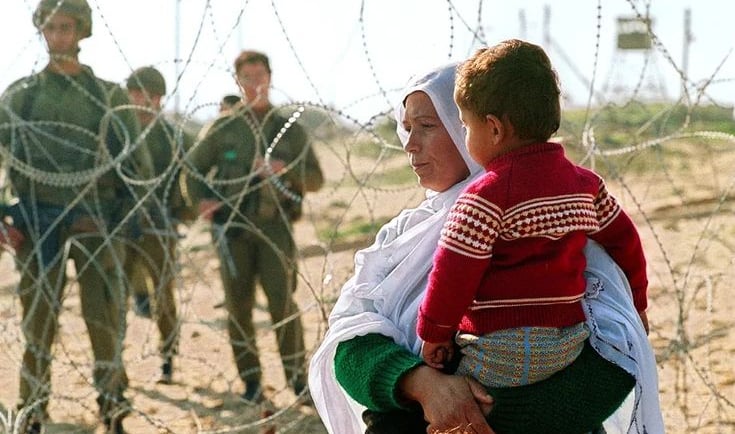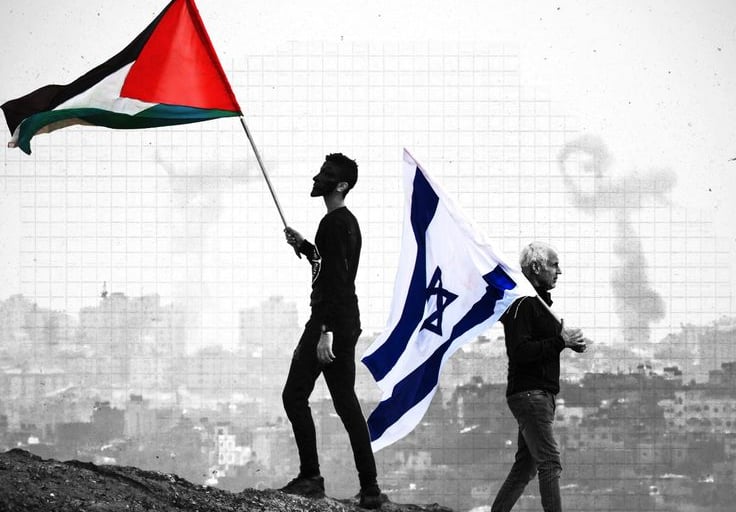Israel-Hamas ceasefire
Israel and Hamas agreed to a Qatar-brokered ceasefire, featuring a six-week truce, hostage exchanges, and aid to Gaza, with global leaders like Biden and Trump backing the move.
WORLD
1/18/20256 min read


Israel Approves Ceasefire in Gaza, Releases Hostages: A Moment of Hope Amidst Ongoing Conflict
In a historic shift toward peace, Israel has approved a ceasefire agreement in Gaza, accompanied by the release of hostages held by Hamas. This decision comes after weeks of escalating violence, which has claimed hundreds of lives, displaced thousands, and brought the region to the brink of further devastation. The ceasefire not only marks a temporary halt to hostilities but also opens the door to new diplomatic efforts aimed at securing lasting peace in one of the world’s most volatile regions.
This article explores the details surrounding the ceasefire agreement, the release of hostages, the underlying issues that led to this point, and the broader implications of this decision on global geopolitics.
The Ceasefire Agreement: What Does It Mean?
The ceasefire agreement between Israel and Hamas, brokered by various international entities including Egypt and Qatar, calls for an immediate cessation of hostilities in the Gaza Strip. While the specifics of the terms are still being reviewed, the primary objective is to halt the aerial bombardments and rocket attacks that have been taking place for weeks. In return, Israel has agreed to certain conditions, including the release of hostages captured by Hamas during the conflict.
The Israeli Defense Forces (IDF) and Hamas had been engaged in one of the bloodiest confrontations in recent history, with both sides suffering significant casualties. The ceasefire agreement was hailed as a necessary step toward reducing civilian suffering and opening the door for further diplomatic efforts. While the ceasefire is fragile and temporary, it represents a critical opportunity for negotiations and a de-escalation of violence in the Israel-Palestine conflict.
Hostage Situation: How Many Were Taken, and Who Are They?
One of the most heartbreaking aspects of the ongoing conflict has been the capture of civilians, including both Israelis and foreigners, by Hamas. According to reports from the Israeli government and various humanitarian organizations, over 240 hostages were taken during the initial stages of the conflict. These hostages included not only Israeli nationals but also foreign citizens from countries such as the United States, Thailand, Germany, France, and the Philippines, as well as Palestinian residents of Israel and the West Bank. The captives ranged from soldiers to civilians, including women, children, and the elderly.
The situation of these hostages became a focal point in the international community's calls for a ceasefire. Many were held in Gaza under harsh conditions, with their fate uncertain. As part of the ceasefire agreement, Israel has managed to secure the release of dozens of these hostages. While the full scope of the releases is still being confirmed, reports suggest that at least 50 hostages were freed in the initial stages of the ceasefire deal, with more potentially to follow.
The release of hostages has been hailed as a humanitarian victory, offering a glimmer of hope to those affected by the conflict. For Israel, it is seen as a significant achievement, as the safe return of hostages was a key demand throughout the negotiations. For Hamas, the release of prisoners can be viewed as a political bargaining chip that may help them gain concessions in future talks.
What Does the Ceasefire Mean for the Situation on the Ground?
The impact of this ceasefire on the ground in Gaza is profound. The region has been severely impacted by weeks of intense aerial bombardment and rocket attacks. According to the United Nations, over 4,000 people have lost their lives in Gaza alone, and thousands more have been injured. Infrastructure, including hospitals, schools, and water supplies, has been severely damaged, worsening the humanitarian crisis.
For Palestinians in Gaza, the ceasefire represents a brief respite from the violence and destruction that has defined their lives for the past month. However, many experts warn that the root causes of the conflict—such as territorial disputes, the status of Jerusalem, and the broader Israeli-Palestinian divide—remain unresolved. While the ceasefire offers a temporary break, the underlying issues remain, and without a sustainable peace process, it is likely that tensions will flare up again in the future.
For Israelis, the ceasefire offers a chance for healing after the trauma of ongoing attacks on their cities. The country has also seen its share of casualties, though the civilian toll in Israel has been far lower than in Gaza. Despite the temporary peace, the emotional and psychological scars left by the violence will take time to heal.
How Many Hostages Were Taken?
Reports suggest that over 240 individuals were taken hostage by Hamas during the initial stages of the conflict, particularly after the violent escalation on October 7, 2023. This was a highly coordinated operation that saw both civilians and soldiers from Israel, as well as foreign nationals, kidnapped. Among those taken were:
Israeli citizens: A significant portion of the hostages were Israelis, including men, women, and children. Many of these were civilians who were taken from their homes, from areas near the Gaza border, or during violent raids.
Foreign nationals: Hostages also included individuals from several other countries, including the United States, Thailand, Germany, France, and the Philippines, as well as Palestinian residents of Israel and the West Bank.
Israeli soldiers: In addition to civilians, several Israeli Defense Forces (IDF) soldiers were captured during combat operations. Some were captured in Gaza, while others were abducted during the border incursions.
The hostages, who were often seen in distressing videos released by Hamas, included women, children, the elderly, and individuals with medical conditions, making their captivity even more tragic. The hostage situation, compounded by Israel's military retaliation, significantly escalated the humanitarian crisis.
The Global Impact: What Does This Mean for the World?
The ceasefire and hostages' release are not just significant for Israel and Gaza but also for the broader global community. The international community, including the United States, the European Union, and Arab nations, has been closely monitoring the conflict, with diplomatic pressure mounting for a resolution.
1. Diplomatic Engagement and Middle East Peace
This ceasefire could pave the way for renewed diplomatic efforts aimed at resolving the long-standing Israeli-Palestinian conflict. While the ceasefire itself is a short-term solution, it offers a potential opening for negotiations, which have been stalled for years. The involvement of mediating countries such as Egypt and Qatar demonstrates the complex nature of Middle Eastern diplomacy, where local actors play crucial roles in bringing about peace.
2. Humanitarian Considerations
The international community, particularly humanitarian organizations, has expressed concern over the severe toll the conflict has taken on civilians. The ceasefire represents an opportunity for aid to flow into Gaza, addressing critical needs such as medical supplies, food, and shelter for displaced individuals. It also provides a chance for the restoration of basic services, such as electricity and water, which have been disrupted by the fighting.
3. Impact on Global Security
The escalation of violence in Gaza has broader implications for global security. The Middle East is already a volatile region, and the ongoing Israeli-Palestinian conflict has the potential to fuel broader regional instability. Tensions between Israel and Hamas can spill over into other neighboring countries, exacerbating conflicts in Syria, Lebanon, and beyond. Furthermore, the ceasefire may provide a temporary reprieve from violence but does not address the larger geopolitical forces at play in the region.
4. Reputation of International Bodies
This ceasefire also tests the credibility of international organizations such as the United Nations. While many have called for stronger action to prevent further escalation, this agreement demonstrates that international pressure, combined with diplomatic engagement, can bring about a temporary peace. However, the long-term success of these interventions will depend on how well international actors can facilitate further negotiations and ensure that the ceasefire holds.
Looking Ahead: A Fragile Peace?
While the approval of the ceasefire and the release of hostages are significant steps forward, the path to lasting peace remains fraught with challenges. The ceasefire represents a temporary relief for the region, but it does not solve the root causes of the conflict. Both Israel and Hamas have longstanding grievances, and without a broader peace agreement, the risk of renewed violence remains high.
The international community must continue to apply pressure, encouraging both sides to come to the negotiating table with the goal of a sustainable and lasting peace. The release of hostages and the temporary ceasefire might be the beginning of this process, but only time will tell if it will lead to a permanent resolution to one of the world’s most enduring conflicts.
Conclusion
Israel’s approval of a ceasefire in Gaza, combined with the release of hostages, is a moment of hope amidst a prolonged and devastating conflict. It marks a crucial opportunity for de-escalation and humanitarian relief, offering a brief but significant break from violence for civilians on both sides. As the situation evolves, the world watches closely, hoping that this ceasefire can serve as a stepping stone toward long-term peace and stability in the Middle East. However, much work remains, and the true test will be in how the international community and local actors continue to navigate the complex dynamics of the Israeli-Palestinian conflict.

